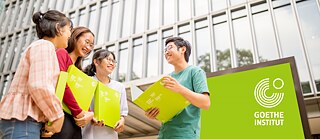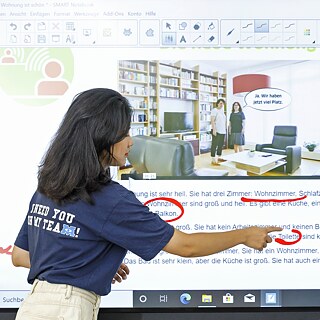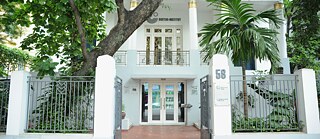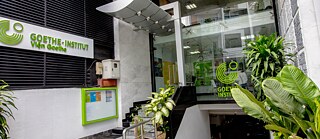Dạy tiếng Đức
Goethe-Institut là nhà cung cấp các khóa đào tạo giáo viên tiếng Đức hàng đầu thế giới. Chúng tôi cung cấp cho bạn các tài liệu cập nhật và các ưu đãi tương tác cho các bài học của bạn.

Goethe-Institut đưa tiếng Đức ra thế giới. Chúng tôi cung cấp các khóa học tiếng Đức và các kỳ thi tiếng Đức tại hơn 90 quốc gia.
Goethe-Institut là nhà cung cấp các khóa đào tạo giáo viên tiếng Đức hàng đầu thế giới. Chúng tôi cung cấp cho bạn các tài liệu cập nhật và các ưu đãi tương tác cho các bài học của bạn.

Hai Goethe-Institut tại Việt Nam
Chúng tôi quảng bá kiến thức về tiếng Đức ở nước ngoài và tăng cường hợp tác văn hóa quốc tế. Hơn 150 học viện trên toàn thế giới truyền đạt văn hóa, ngôn ngữ và thông tin về Đức. Ngoài ra còn có quan hệ đối tác với các xã hội văn hóa, thư viện và trung tâm học ngôn ngữ khác.



